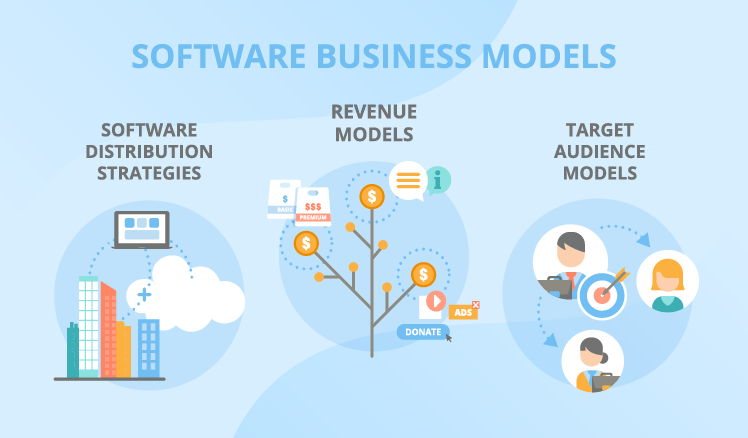You may hope or even believe that your software product will succeed after generating the concept, but improving your professional standing does not just rely on the idea.
To be successful, you must first decide how and to whom you will provide the product in addition to the way you can make money off it.

We discuss the technical details, expenses, and duties associated with each of the potential solutions, using our knowledge in outsourced software product development, to help you have a grasp of which option is best for you.
Distribution models
On-premises: This paradigm is widely used in software solutions that must reliably and continuously provide excellent productivity or handle particularly sensitive data. Users would also want to have the solution installed on their hardware.
Especially if your target market has intermittent network connectivity due to their line of work or for other reasons.
Cloud: Cloud hosting is a good alternative for practically all software applications given the outstanding quality of today’s internet connections. This strategy’s distribution expenses are related to cloud infrastructure. You can pick a price strategy that works for your product based on the amount of storage and processing power it requires.
The security of your data and the accessibility of your services are solely your responsibility under the cloud model. However, you won’t have total control over what you’re accountable for because you’ll be reliant on independent cloud hosting providers. Nevertheless, it is safe to rely on the cloud hosting services provided by well-known and respected companies.
Hybrid: With this approach, you allow customers to install the product locally and activate the cloud in order for users to access them as necessary. Taking note, some businesses might like to store sensitive, secured and private data on their servers while carrying out routine everyday processes via the cloud. The rates, who is in charge of data protection, and the level of support services in this approach will all depend on the way the two strategies you offer are something medium and balanced in your hybrid offer.
Target Audience Models
When choosing a distribution direction, the target audience idea must be taken into consideration. Here, the two major typical target audience approaches are addressed along with their respective relationships to these two distribution strategies.
B2B: For B2B, companies that buy and apply your product are among the target market. You’ll need a committed, skilled sales force that can negotiate with corporate representatives because such clients require complex sales.
B2C: An individual user receives a software product in accordance with the business-to-consumer model. Since your target market is broad and diverse, there is no need for a professional field sales force either. Instead, the best method to discover new clients is to actively promote your software through digital marketing.
Revenue models
It’s time to consider how to make money from your product once you’ve decided who and how you’ll sell it to. Here is a list of potential revenue models organized by the main source of income.
Subscription: Your service will provide different prepaid plans to your clients, allowing them to sign up to use your software for a set period of time or a particular number of users. This is a typical business strategy for SaaS companies, allowing customers to choose whether to utilize your service or not at any time. But it also applies to software that is installed locally.
Freemium: It is possible to charge money to activate extra features while allowing your customers to use a portion of your product’s functionality for free. Another choice is to establish a trial period during which users can use all the features for a brief period of time.
The functionality is then either totally or partially frozen until the user pays to remove restrictions.
